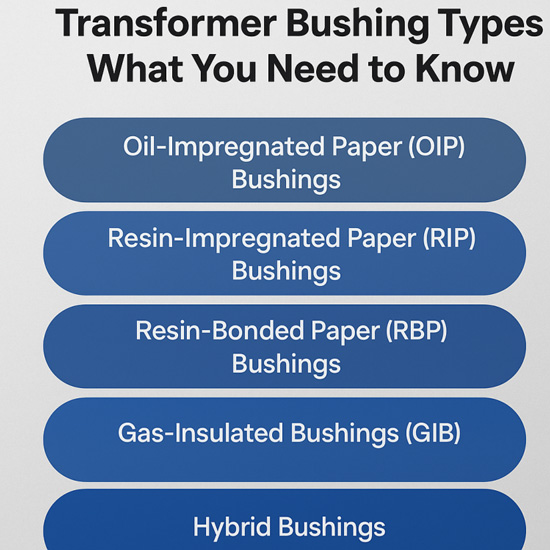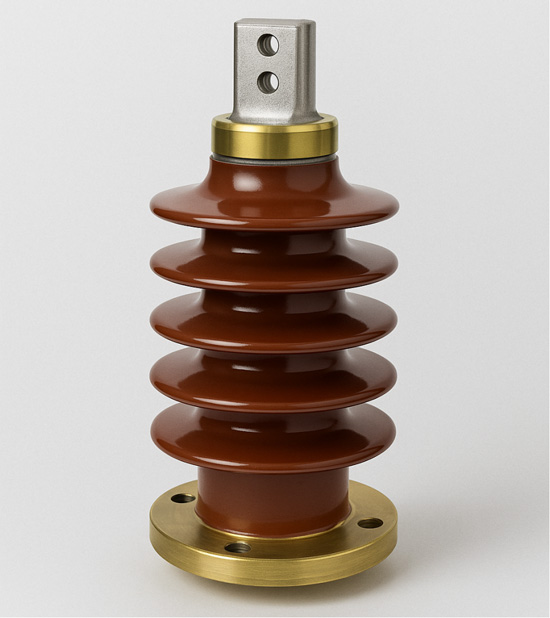When it comes to transformer design and operation, bushings may seem like small components—but they play a critical role in ensuring electrical insulation and safe current conduction between internal transformer components and external connections. Understanding the types of transformer bushings is key to choosing the right one for long-term reliability and efficiency.

Main Types of Transformer Bushings
Transformer bushings can be broadly categorized based on insulation type and construction. Here are the most widely used options:
1. Oil-Impregnated Paper (OIP) Bushings
These are the most traditional and widely used bushings for high-voltage transformers. They consist of layers of paper insulation impregnated with insulating oil.
·Advantages: Proven technology, high dielectric strength, cost-effective.
·Limitations: Susceptible to oil leakage and moisture ingress; requires regular maintenance.
2. Resin-Impregnated Paper (RIP) Bushings
A modern alternative to OIP bushings, RIP bushings replace oil with solid resin impregnation.
·Advantages: No free oil (safer for fire-prone environments), reduced maintenance, better moisture resistance.
·Limitations: Slightly higher cost than OIP.
3. Resin-Bonded Paper (RBP) Bushings
Often used in medium-voltage applications, these bushings use thermally cured resin to bond paper insulation.
·Advantages: Solid structure, moderate cost, compact.
·Limitations: Lower dielectric strength compared to RIP and OIP for high-voltage use.
4. Gas-Insulated Bushings (GIB)
These bushings use SF₆ gas or dry air for insulation and are commonly used in GIS and indoor substations.
·Advantages: Compact, low-maintenance, no oil risk.
·Limitations: Requires sealed environments and pressure monitoring.
5. Hybrid Bushings
Combine features from different types, e.g., RIP core with porcelain housing.
·Advantages: Customized balance of performance, durability, and maintenance.

How to Choose the Right Bushing?
When selecting a transformer bushing, consider these factors:
Voltage rating: Match with system specifications
Installation environment: Indoor, outdoor, high altitude, or humidity
Maintenance capacity: Oil-based vs. maintenance-free solid insulation
Safety and fire risk: Choose oil-free types for enclosed environments
Standards compliance: Ensure the product meets IEC, IEEE, or national standards